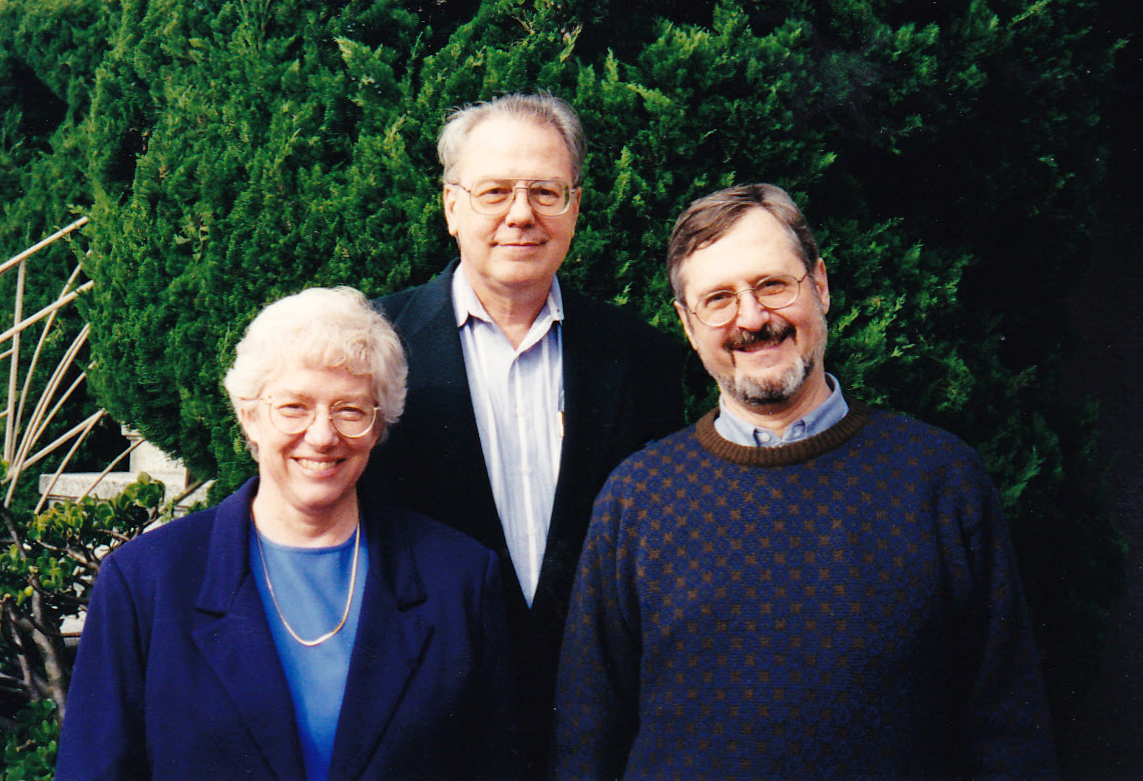Astronomy: A Free, Online Astro 101 Textbook
Andrew Fraknoi Fromm Inst./U of San Francisco
The non-profit OpenStax project at Rice University, supported by a group of major US charitable foundations, is working to produce a free, professionally edited, open-source, online textbook in every field in which college students take introductory courses. Currently, they have over 40 such books published.
My co-authors, David Morrison and Sidney Wolff, and I had been writing textbooks for commercial publishers for a while. The publisher of our last book became such a large conglomerate that they found themselves publishing six competing lines of astronomy textbooks simultaneously! Ours was neglected and left to wither as a result. So, we were delighted to be approached by OpenStax to spearhead the project to write their free introductory astronomy textbook.

The book, simply entitled “Astronomy”, was published in 2017. Despite the fact that our publisher has no money for publicity or sales reps, it has been found by astronomy instructors looking for ways to reduce the cost of their courses. Today, the book is being used at over 1,100 institutions and has over half a million student readers. The publisher calculates that this has saved US students more than $40 million in astronomy textbook costs so far. Anyone can read or download the book via the OpenStax website.
In producing the book, we had help from over 60 colleagues in astronomy and astronomy education — both with making sure the science was up-to-date and with assuring effective pedagogy. Among these colleagues are Debra Fischer (Yale University), Heidi Hammel (James Webb Space Telescope), Steve Kawaler (Iowa State University), Lloyd Knox (University of California Davis), and Martin Elvis (Center for Astrophysics | Harvard & Smithsonian). Available for online reading, and downloadable for all devices (including an OpenStax phone app), the book is being updated regularly. Happily, updates only require moving electrons around, and not chopping down trees.
Among the features of the book that colleagues have told us they find useful are: 1) mathematical formulas and worked-out examples are in boxes, so they can be included or skipped as the instructor wishes; 2) each chapter includes a summary, plus review questions, thought-provoking questions, numerical problems, and collaborative group activities; 3) recent web resources (including videos, animations, and apps) are provided as live links throughout the book and more are given at the end of the chapter; 4) profiles of astronomers (past and present) are included in the chapters as boxes; 5) short sections point out connections between astronomy and other fields students are studying.
A key goal of the book is to present astronomy in ways that are accessible to non-science majors, who make up the vast majority of the students who take introductory astronomy in North America. The chapters are filled with analogies taken from the students’ own lives; with clear discussions of how we know things, not just what we know; and with occasional touches of humor.

The book has an Open Education hub of free shared resources. Adopters can use this hub to get ancillary materials developed by the authors or by fellow instructors. Already on the hub are:
- a list of free short videos on the web to go with each chapter of the text;
- a guide to free lab manuals on the web for introductory astronomy courses;
- a list of science fiction stories with good astronomy, organized by topic;
- a guide to include more multi-cultural astronomy in your course;
- a primer on things a first-time Astro 101 instructor needs to know and do;
- a resource with many links to the contributions of women to astronomy;
- a guide to how instructors can respond to pseudo-scientific claims brought up by students (such as moon-landing denial, creationism, astrology, UFOs, etc.);
- a summary guide to use the free planetarium software called Stellarium;
- PowerPoint slides with all the book figures;
- a sample syllabus, and much more.
A new Learning Management System, keyed to the free textbook (but not itself free), has recently been developed by one of OpenStax’s partner companies. The system, called Expert TA Astronomy, includes:
- more than 1,100 multiple choice questions,
- more than 1,100 true-false review questions,
- 276 calculation questions (with different values for different students), and
- 234 graphical questions (including ranking, sorting, labeling, and chapter review).
All of these are automatically graded by the system. In addition, the roughly 800 essay questions from the book are now also included. You have to grade answers to these yourself, but then the grade is added to the grade book being kept by the system. Expert TA: Astronomy has other security and convenience features that make homework, tests, and grading easier to manage.
We invite you to take a look at the textbook when you have a chance. While it is only available in English at present, we hope one day to see it translated into other languages and used in other parts of the world. If you have any thoughts about the book and how else it can be useful, please feel free to contact me at [email protected].

